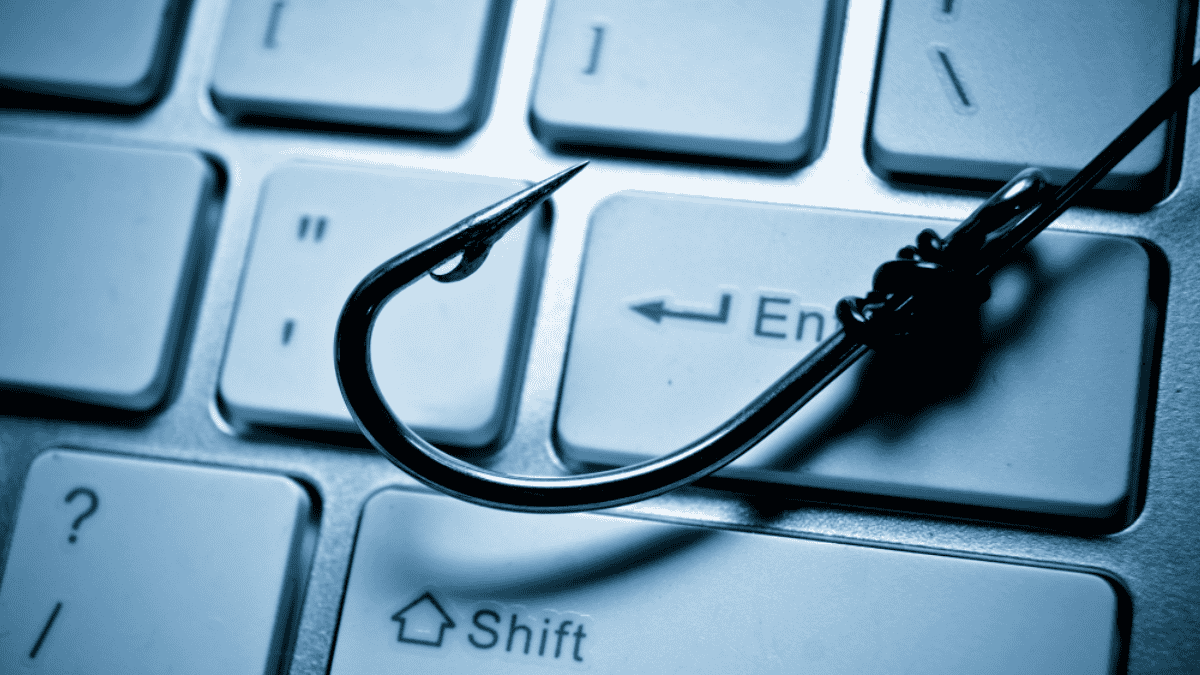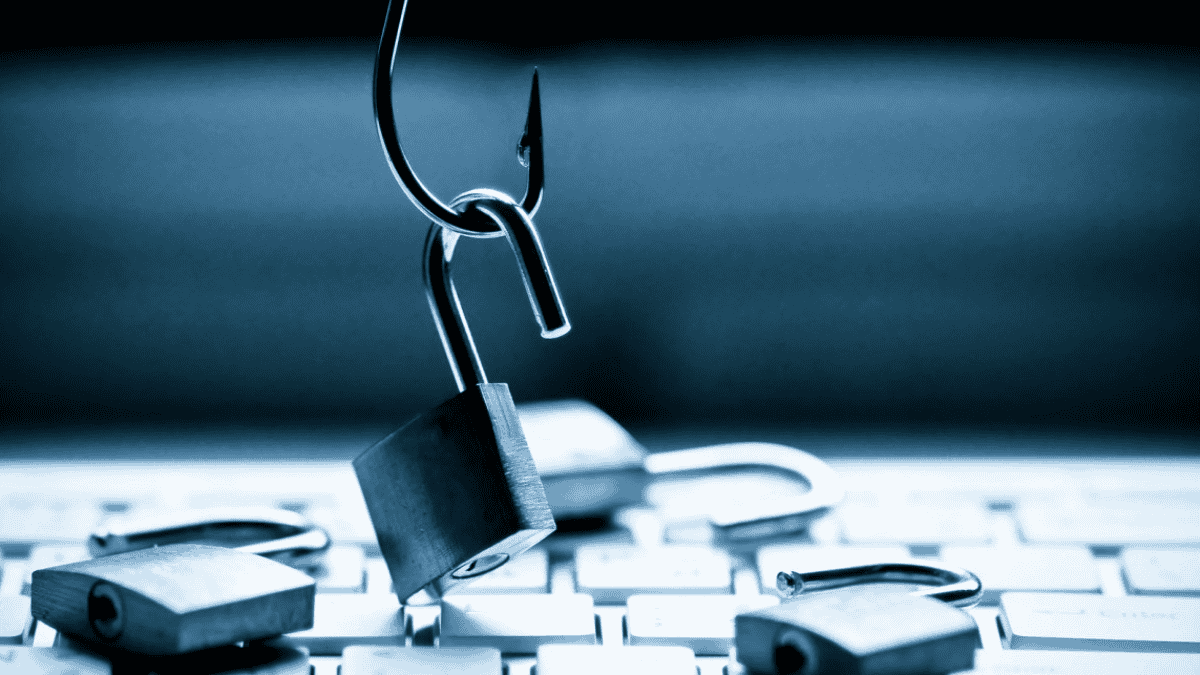Spear phishing is a targeted attempt to steal sensitive information such as account credentials or financial information from a specific individual or organization. Unlike general phishing attacks, which are sent to a large number of people, spear phishing is personalized and often involves detailed knowledge about the victim.
Attackers may use information gathered from social media or other sources to craft convincing messages that appear legitimate. Strong cybersecurity measures, such as multi-factor authentication and employee training, are essential in defending against these highly deceptive attacks.
How Does Spear Phishing Differ from Regular Phishing?
The primary difference between spear phishing and regular phishing lies in the level of targeting and personalization. Regular phishing attacks are broad and indiscriminate, aiming to trick as many individuals as possible. In contrast, spear phishing focuses on a specific target, making it more deceptive and potentially more harmful.
Understanding these distinctions is crucial for SMEs as they develop strategies to protect against these sophisticated attacks.
Importance of Combatting Spear Phishing
Spear phishing poses significant threats to organizations, particularly small and medium-sized enterprises (SMEs). Understanding the risks and impacts associated with these targeted attacks is crucial for developing effective defense strategies.
Risks Associated with Falling Victim to Spear Phishing
Falling victim to spear phishing can lead to various detrimental outcomes for an organization. The following table outlines some of the key risks:
| Risk Type | Description |
| Financial Loss | Direct theft of funds or financial information. |
| Data Breach | Unauthorized access to sensitive company data. |
| Reputation Damage | Loss of customer trust and damage to brand image. |
| Legal Consequences | Potential lawsuits or regulatory fines. |
| Operational Disruption | Downtime and loss of productivity due to recovery efforts. |
Impact on SMEs
SMEs are particularly vulnerable to spear phishing attacks due to limited resources and cybersecurity measures. The impact of these attacks can be severe, as illustrated in the following table:
| Impact Area | Description |
| Financial Strain | SMEs may struggle to recover from financial losses. |
| Increased Security Costs | Additional investments in security measures may be required. |
| Loss of Competitive Edge | Damage to reputation can lead to loss of clients and market position. |
| Employee Morale | Increased stress and anxiety among employees post-attack. |
| Long-Term Viability | In severe cases, attacks can threaten the survival of the business. |
Understanding these risks and impacts emphasizes the importance of implementing robust security measures to combat spear phishing effectively.
Strategies to Enhance Security
To effectively combat spear phishing, small and medium-sized enterprises (SMEs) must implement robust security strategies. These strategies focus on employee awareness, email authentication, and multi-factor authentication.

Employee Training and Awareness
Training employees is a critical step in preventing spear phishing attacks. Regular training sessions can help staff recognize suspicious emails and understand the tactics used by attackers.
Implementing Email Authentication Protocols
Email authentication protocols help verify the legitimacy of email senders, reducing the risk of spear phishing. Implementing these protocols can significantly enhance email security.
Using Multi-Factor Authentication
Multi-factor authentication or MFA adds an extra layer of security by requiring users to provide two or more verification factors to access their accounts. This makes it more difficult for attackers to gain unauthorized access.
Focusing on employee training, implementing email authentication protocols, and utilizing multi-factor authentication, SMEs can significantly enhance their defenses against spear phishing attacks. These strategies create a more secure environment and empower employees to recognize and respond to potential threats effectively.
Advanced Technological Defenses
To effectively combat spear phishing, small and medium-sized enterprises (SMEs) must implement advanced technological defenses. These defenses include email filtering and anti-spam solutions, endpoint security measures, and incident response planning.
Email Filtering and Anti-Spam Solutions
Email filtering and anti-spam solutions are essential for identifying and blocking malicious emails before they reach employees' inboxes. These tools analyze incoming messages for suspicious content, known phishing patterns, and other indicators of compromise.
Implementing robust email filtering can significantly reduce the risk of spear phishing attacks.
Endpoint Security Measures
Endpoint security measures protect devices such as computers, smartphones, and tablets from threats. These measures ensure that all endpoints are secure and monitored for suspicious activity.
Employing comprehensive endpoint security, SMEs can safeguard their networks against spear phishing attempts.
Incident Response Planning
Incident response planning is crucial for preparing an organization to respond effectively to a spear phishing attack. A well-defined plan outlines the steps to take when an incident occurs, minimizing damage and recovery time.
Having a solid incident response plan in place enables SMEs to react swiftly and efficiently to spear phishing threats, reducing potential impacts on the organization.
Monitoring and Detection
Effective monitoring and detection are crucial components in the fight against spear phishing. By implementing regular security audits, utilizing real-time threat intelligence, and employing behavioral analysis tools, organizations can significantly enhance their defenses.
Regular Security Audits
Performing regular security audits allows organizations to spot weaknesses in their systems. These audits assess the effectiveness of existing security measures and ensure compliance with industry standards.
Real-Time Threat Intelligence
Real-time threat intelligence provides organizations with up-to-date information on emerging threats, including spear phishing tactics. By leveraging this intelligence, organizations can proactively adjust their security measures to counteract potential attacks.
Behavioral Analysis Tools
Behavioral analysis tools monitor user activity to detect unusual patterns that may indicate a spear phishing attempt. These tools can identify anomalies in login attempts, email interactions, and file access, allowing for timely intervention.
Integrating these monitoring and detection strategies, organizations can strengthen their defenses against spear phishing and enhance their overall cybersecurity posture.
Response and Recovery
In the event of a spear phishing attack, having a robust response and recovery plan is essential for minimizing damage and restoring normal operations. This section outlines key components of an effective response strategy.
Incident Response Procedures
Incident response procedures are critical for addressing spear phishing incidents promptly and effectively. These procedures should include the following steps:
| Step | Description |
| Identification | Recognize and confirm the spear phishing attempt. |
| Containment | Isolate affected systems to prevent further damage. |
| Eradication | Remove the threat from the environment. |
| Recovery | Restore systems and data to normal operations. |
| Lessons Learned | Analyze the incident to improve future responses. |
Establishing a clear communication plan during an incident is also vital. This ensures that all stakeholders are informed and that the response team can coordinate effectively.

Data Backup and Recovery Plans
Data backup and recovery plans are essential for protecting critical information from loss due to spear phishing attacks. These plans should include:
| Backup Type | Frequency | Storage Location |
| Full Backup | Weekly | Offsite Cloud Storage |
| Incremental Backup | Daily | Local External Drives |
| Differential Backup | Bi-Weekly | On-Premises Servers |
Regularly testing backup systems is crucial to ensure data can be restored quickly and accurately. This minimizes downtime and helps maintain business continuity.
Post-Incident Evaluation and Improvement
After addressing a spear phishing incident, conducting a post-incident evaluation is important for identifying weaknesses and improving defenses. This evaluation should cover:
| Evaluation Aspect | Description |
| Incident Review | Analyze the incident timeline and response effectiveness. |
| Vulnerability Assessment | Identify any security gaps that were exploited. |
| Policy Update | Revise security policies and procedures based on findings. |
| Training Enhancement | Update employee training programs to address new threats. |
Innovate and Grow with LK Tech Solutions
Systematically reviewing and improving response strategies helps SMEs build stronger defenses against future spear phishing attempts. At LK Tech, we provide top-notch IT support tailored to your unique needs, ensuring your business stays protected against evolving cyber threats.
Our team stays ahead of the latest phishing tactics, offering proactive security solutions and expert guidance to safeguard your sensitive data. Businesses looking for reliable Cincinnati IT companies can count on us for cutting-edge protection and dedicated support. Reach out today to learn how we can help secure your organization.


